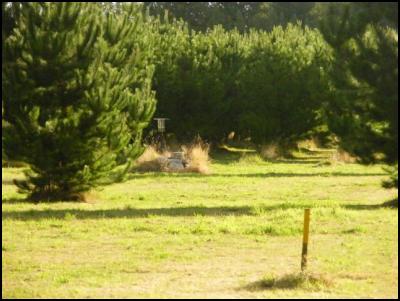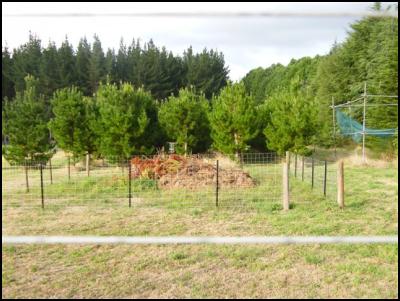Rotorua GE Tree Trial Remains Environment Threat
Media Release
Attention; Forestry, Agriculture, NGO,
Environmental, Trade, Science, Local Body, and Government
Reporters.
Soil & Health Association of New Zealand
(Est. 1941)
Publishers of ORGANIC NZ

Click to enlarge
16 March 2008
Rotorua GE Tree Trial Remains An Environmental Threat.
The GE tree field trial at Rotorua, run by Crown research institute Scion, has an increasing risk of spreading GE pollen according to the Soil & Health Association.
“Scion, MAF Biosecurity New Zealand (MAFBNZ), and ERMA are continuing to allow GE pine trees to grow in a way that makes GE pollen dispersal all the more likely,” says Soil & Health spokesperson Steffan Browning.
According to research from Duke University’s Center on Global Change, which has studied pollen from GE conifer trees, the pollen from transgenic pines can spread more than a thousand miles, leading to as they put it, “substantial ... subsequent colonization.”
Following the Soil & Health alert of Scion’s not meeting the conditions of ERMA’s consent, and following a breach by protestors of the GE field trial’s security fence and the cutting down of 19 experimental trees, Scion has taken some corrective actions, but it has left trees unpruned to approximately 4.5 metres (Photographs attached, higher resolution available).

Click to enlarge
The ERMA consent requires that the pinus radiata experimental trees are ‘hedged’ at two metres with the central leader allowed to grow to 5 metres. This was to allow detection of male pollen producing structures and the larger female seed bearing cones.
“At two metres most growing tips (where male pollen producing structures occur) would be visible by a Scion researcher or the MAFBNZ auditor. However with the trees now bushy and more than 4.5 metre tall, observation by use of a ladder is quite different from at standing level and makes pollen release just a matter of time.”
“ERMA regards the issue as one to be worked through by Scion and MAFBNZ, but we urge ERMA to ensure the consent requirements are being met. Not hedging at two metres is a clear and very risky breach of consent conditions.”
MAFBNZ have the audit function over GE trials and carried out the investigation of the cutting down of GE trees and of Soil & Health’s concerns.
Soil & Health had reported poor management and auditing of the field trial, of rabbits freely entering the trial, of tractor mowing of GE prunings with no equipment clean down, and of trees not being correctly pruned.
“The MAFBNZ investigation report showed complicity between the decision making agency ERMA, the audit agency MAFBNZ, and the researcher Scion. On the positive side, they have now dealt with the rabbit issues and have erected a fenced area to contain prunings and dead trees ahead of incineration, however what is probably the riskiest aspect, that of potential pollen dispersal, has not been addressed.”
“It must be asked, what is to happen when ERMA and MAFBNZ allow a GE researcher such as Scion to consistently breach the conditions of what must be regarded as a very privileged permission, to field test GE organisms in New Zealand? ”
Soil & Health is opposed to all GE field trials in New Zealand and has a vision of an Organic 2020.
ENDS


 ChargeNet: EV infrastructure co-funding model welcomed
ChargeNet: EV infrastructure co-funding model welcomed NZ Trucking Association: TruckSafe New Zealand Launches | A Game-Changer For Heavy Vehicle Safety And Compliance
NZ Trucking Association: TruckSafe New Zealand Launches | A Game-Changer For Heavy Vehicle Safety And Compliance Gaurav Mittal, IMI: How Can We Balance AI’s Potential And Ethical Challenges?
Gaurav Mittal, IMI: How Can We Balance AI’s Potential And Ethical Challenges? Science Media Centre: Several US-based Environmental Science Databases To Be Taken Down – Expert Reaction
Science Media Centre: Several US-based Environmental Science Databases To Be Taken Down – Expert Reaction Consumer NZ: Despite Low Confidence In Government Efforts, People Want Urgent Action To Lower Grocery Bills
Consumer NZ: Despite Low Confidence In Government Efforts, People Want Urgent Action To Lower Grocery Bills NZ Banking Association: Banks Step Up Customer Scam Protections And Compensation
NZ Banking Association: Banks Step Up Customer Scam Protections And Compensation



